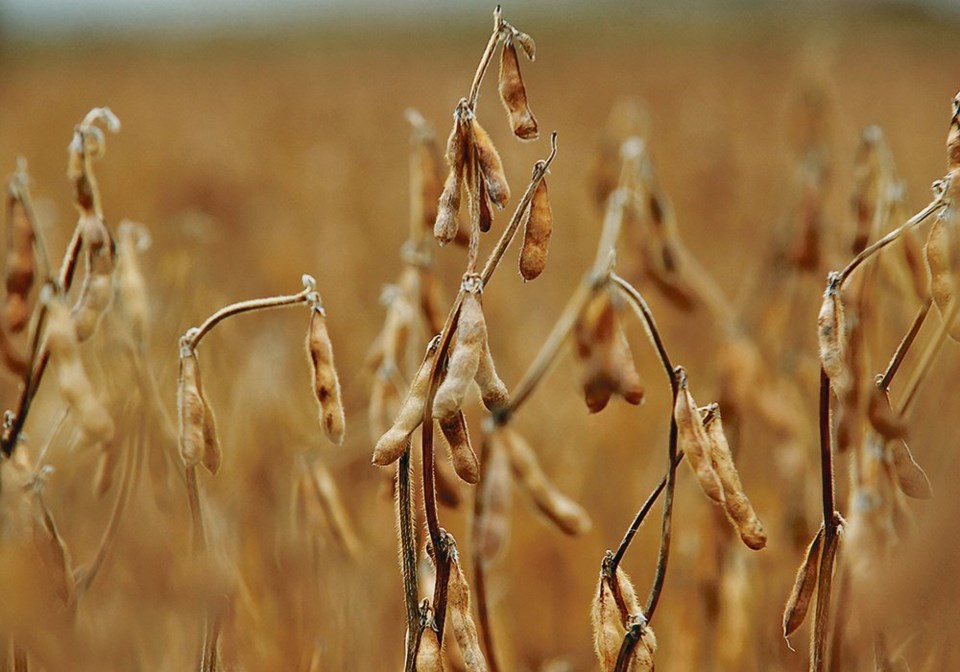WESTERN PRODUCER — Despite a difficult stretch from 2017-21, Canada’s soybean sector remains optimistic about acreage expansion in Western Canada.
Soy Canada, in its strategic plan, hopes to reach six million acres of beans on the Prairies by 2027.
It might take longer than expected to hit that target, since only 1.25 million acres of beans were seeded in Manitoba and Saskatchewan in 2021. However, industry leaders told a virtual soybean summit in late January that rapid expansion is still possible.
“In any strategic plan, there’s always questions about how you’re going to get there and by what time,” said Brian Innes, executive director of Soy Canada, which organized the summit.
“But there remains confidence for growing (more) acres in Western Canada for soybeans…. There’s optimism around growth, with caution about when we’ll get there.”
The soy sector was booming six years ago as more farmers in Manitoba and Saskatchewan jumped into beans. Seeded acreage in the two provinces hit 3.2 million in 2017 — nearly triple the 1.2 million acres of 2013.
But dry summers in the last five years hindered soybean yields. Instead of 35-40 bushels per acre, soybeans in parts of Saskatchewan and western Manitoba yielded 15-20 bu.
“The rest of our cropping structure is set up for that dry August, which is what we usually get,” said Rob Stone, who farms near Davidson, Sask., and had success with soybeans from 2014-2016. “But soybeans need the opposite. They’re a nice hedge, but statistically we get drought conditions at the wrong time for soybeans to work out…. We can’t afford to put in a lot of acres of an all or nothing crop.”
Many producers abandoned beans because the crop can’t handle an extended period without rain, especially in late July and early August.
Last year, Saskatchewan farmers seeded about 85,000 acres of beans, one-tenth of the 850,000 in 2017.
“This is the big one for Western Canada: minimize yield instability caused by drought stress, which is essentially the Achilles Heel of soybeans,” said Cassandra Tkachuk, research specialist with Manitoba Pulse and Soybean Growers.
Agriculture Canada plant breeders and private companies are trying to improve soybean genetics to enhance the plant’s tolerance for moisture stress.
“Maybe two in 10 years in the Prairies, you might have real drought. But I guarantee you every year in the Prairies, you’re going to have moisture stress … two to three weeks without enough moisture for plant growth,” Malcolm Morrison, a scientist with Agriculture Canada in Ottawa, said in 2019.
“That’s what we’re really aiming at. Getting the plant through that period with the least detrimental effect.”
Changing the genetics of plants doesn’t happen overnight, so the soybean industry is looking at other ways to expand the crop on the Prairies.
One possibility is seeding soybeans in geographies with heavier soils.
That means more emphasis on regions like northeastern and east-central Saskatchewan, which is wetter and cooler than the rest of the province.
Additional moisture should help, but beans need heat. They thrive in places like Iowa, where daily high temperatures in July are around 29 C and the daily lows are 19 C. Designing soybeans for a region like Yorkton, Sask., with summer temperatures five to six degrees cooler than Iowa could be challenging.
Previously, soybean breeders have successfully introduced varieties into Western Canada with earlier and earlier maturity. With enough money, nearly anything is possible.
“The maturities we’ve gotten out of soybeans… in the last 15 years has been incredible, when you look at how early they (are now),” Stone said.
There’s also the chance that Western Canada could return to a period with above average rainfall, which dominated from 2006-16. If that happens, farmers may turn their attention back to beans.




